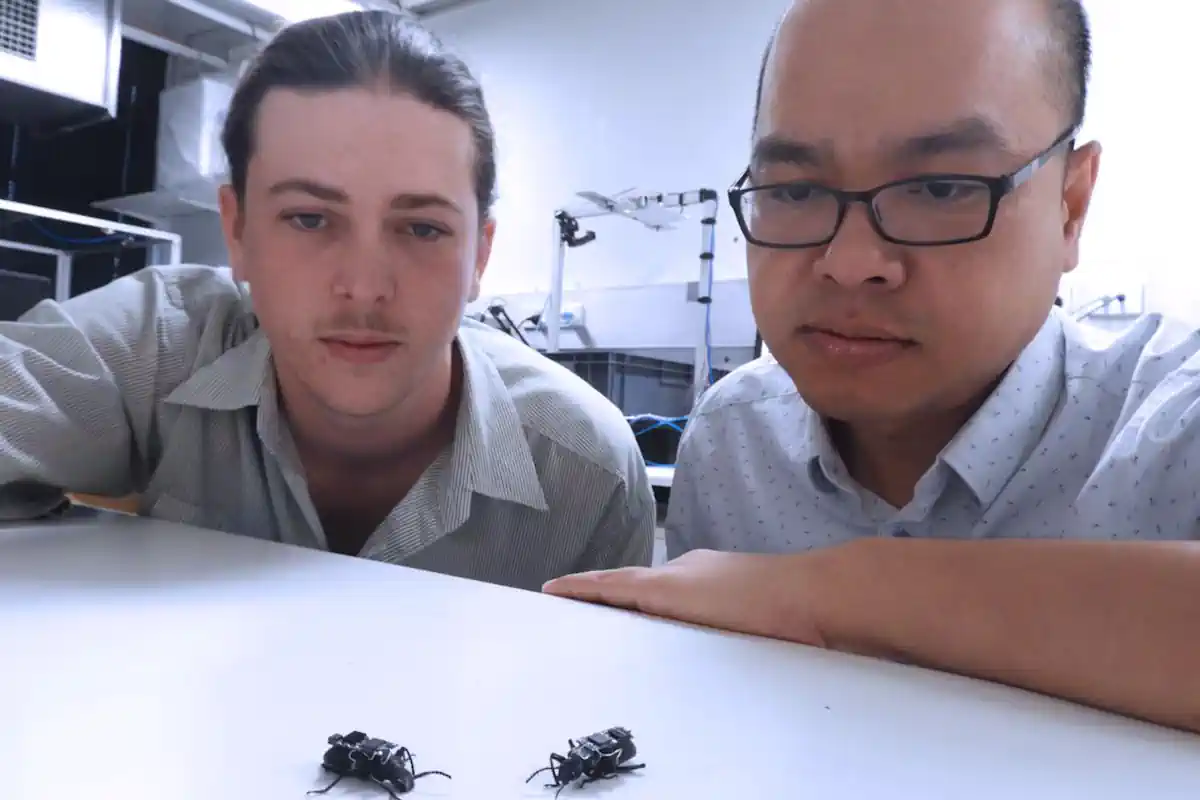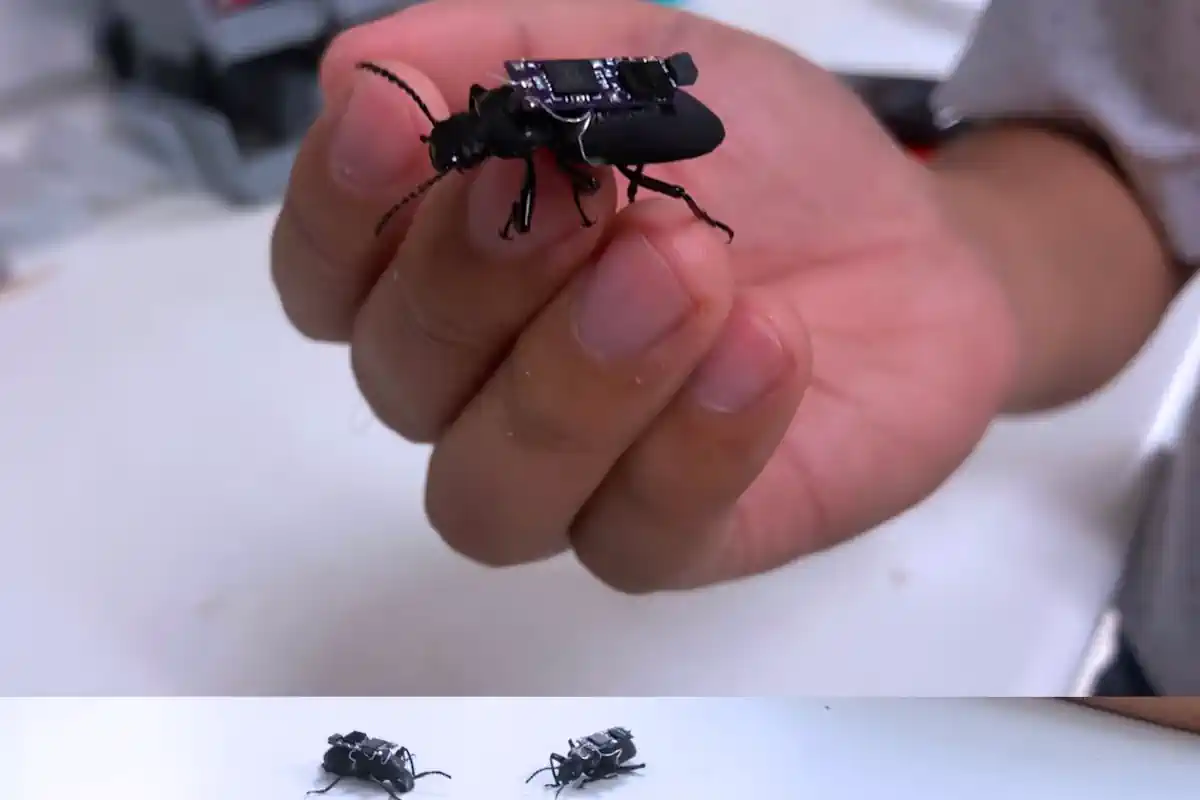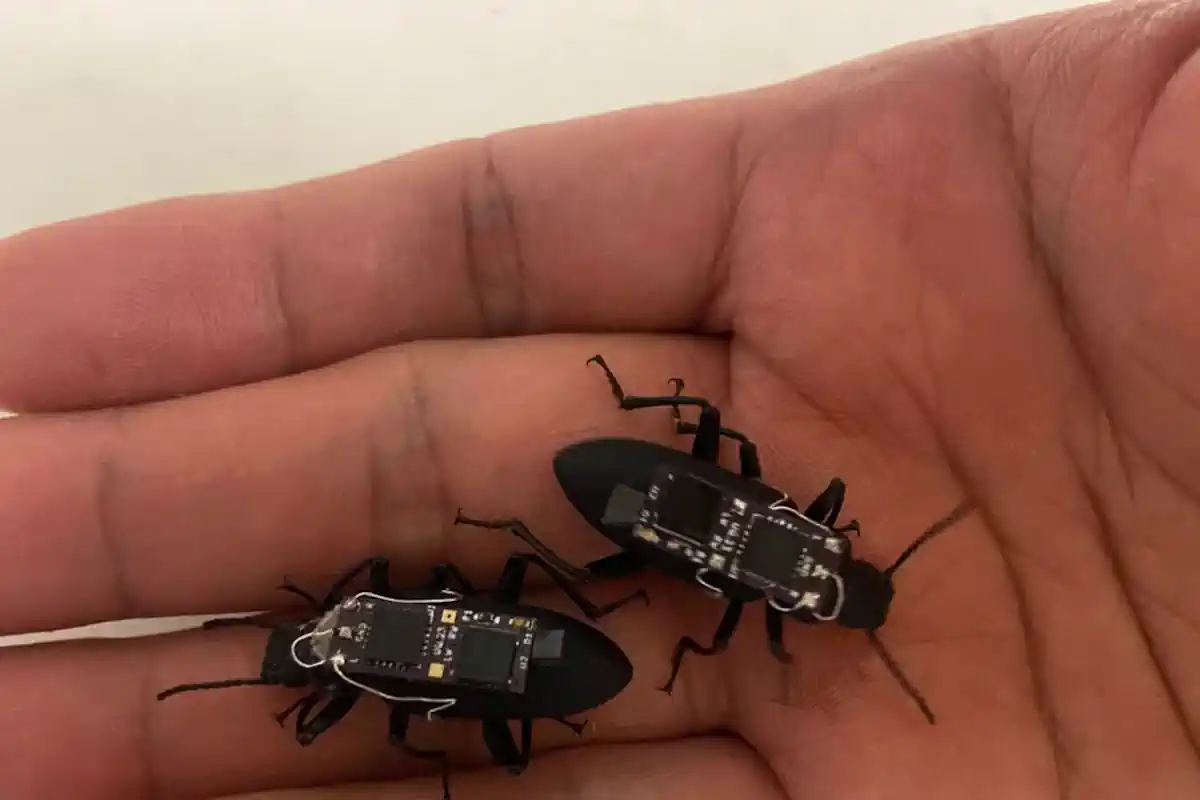Why create a robot from scratch when living beings can be turned into cyborgs? This is the premise of Thang Vo-Doan, a researcher at the University of Queensland in Australia and the mastermind behind a system for controlling the movements of real beetles with a video game joystick. The goal is much more laudable than simply hindering insects: they plan to use them to improve rescue efforts by locating survivors after collapses.
The magic happens thanks to a small backpack with a microchip, which is placed on the beetle’s back. With this device, electrical signals are sent to the insect’s front legs and antennae, causing it to move in the desired direction. The advance is not trivial: researchers at the Australian institution say that locating people under rubble would take hours instead of days.
‘Beetles are incredibly energy efficient.’
‘We chose beetles not only for their durability, but also for their small size and strength, which allows them to carry small electronic components without hindering their movement,’ Vo-Doan told TN Tecno. “These insects are agile walkers and adaptable to different environments. Another advantage is that they stop growing after reaching adulthood, which helps maintain stable electrode placement. They are also relatively easy to care for and handle, making them a practical and reliable option for long-term experimental research,” he adds.

– Do you remember the ‘eureka’ moment, the moment when the initial idea of using real beetles for this project came about?
– One of those key moments came in 2016, when I successfully controlled a cyborg beetle to follow a figure-eight path. It was a compelling demonstration that precise navigation control was possible. A more recent milestone was when Lachlan Fitzgerald, lead author of this paper, demonstrated that we could command the beetle to climb at will, taking the concept to a whole new level. These advances were important because they showed that we can control the beetle’s locomotion, from basic directional movement to more advanced, task-specific actions.
– What are the advantages and disadvantages of using a real beetle rather than developing a robot that mimics the appearance and abilities of an insect?
– Using a real beetle offers several key advantages. First, they are incredibly energy efficient. They are self-sustaining and do not require motors or batteries to move. Their natural mobility and adaptability in complex terrain are also extremely difficult and costly to replicate with robotics.

One challenge is that living organisms have biological variability, so their behaviour is not always 100% predictable. Overall, beetles offer a lightweight, low-power, and highly agile platform, which is especially valuable in environments where conventional robots still struggle.
– In a sort of beginner’s section, could you explain how this works? That is, how does an electrode control the insect’s movements?
– Well, insects such as beetles rely heavily on their sensory systems, particularly their antennae, legs and elytra, to orient themselves in their environment. These structures help them detect touch, vibration and obstacles, guiding their movements instinctively.
We take advantage of this by implanting small electrodes near specific nerves involved in these natural sensory pathways. By applying precise electrical stimulation, we can mimic the sensation of touch. For example, stimulating an antenna can make the beetle feel as if something is brushing against it, causing it to instinctively turn in the opposite direction. Stimulating the left antenna causes it to turn right, and vice versa. With this approach, we can guide the insect to turn left or right, move forward, backward, sideways, and even climb, according to our recent paper, although some movements are still more refined than others.

– We know you use joysticks for this. From a particular console?
– Yes, we use an Xbox joystick to control them, but any standard model would work. It’s simply a user interface that allows us to interact with the system. It gives us flexibility both to conduct experiments and to direct the insects’ movements in real time.
As for the battery, the cable is used to power the backpack to make the experiment more practical, but the cyborg insect can operate wirelessly.
– We are intrigued by one very specific aspect: how do you manage to ‘connect’ the electronic component to the beetle, simply by holding it and being patient?
– We anaesthetise the beetles with crushed ice before placing the electronic backpack on them. This ensures that they do not experience any unnecessary discomfort during the process and makes it easier for us to handle them safely while they are temporarily immobilised.
^^
This invention will mainly be used in rescue operations. What other areas would benefit from such a breakthrough?
– They have potential in environmental monitoring and agriculture. Equipped with miniature sensors, they can collect data in hard-to-reach or dangerous environments, such as collapsed structures or dense forests, measuring humidity and temperature in real time. In agriculture, they offer a lightweight, low-impact solution for monitoring crop health, soil moisture and pest activity, helping farmers make more informed decisions and reduce their reliance on chemicals.
Their ability to move naturally through complex terrain makes them a promising alternative to traditional drones or ground robots, both in ecological research and precision agriculture.
What steps remain to be completed in this research? In plain English: when will robotic beetles be among us? Vo-Doan tells us that they are currently working on advanced wireless ‘backpacks’ equipped with environmental sensors that can help detect survivors and assess conditions inside collapsed structures.
‘When?’ we insist. ‘We estimate that it will take between five and 10 years to implement a fully deployable system in the field. The timeline will depend on the pace of research and development, which is naturally influenced by the availability of resources and funding,’ concludes the specialist leading the research, details of which were recently published in the journal Advanced Science.
